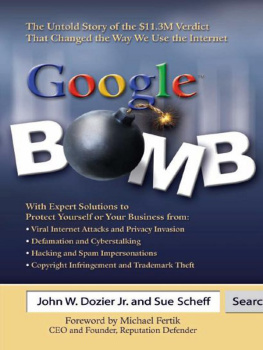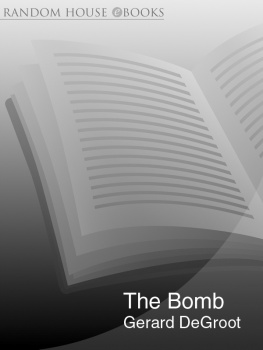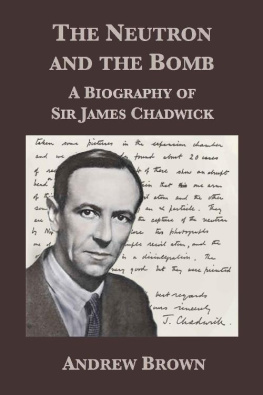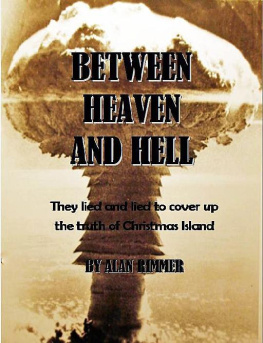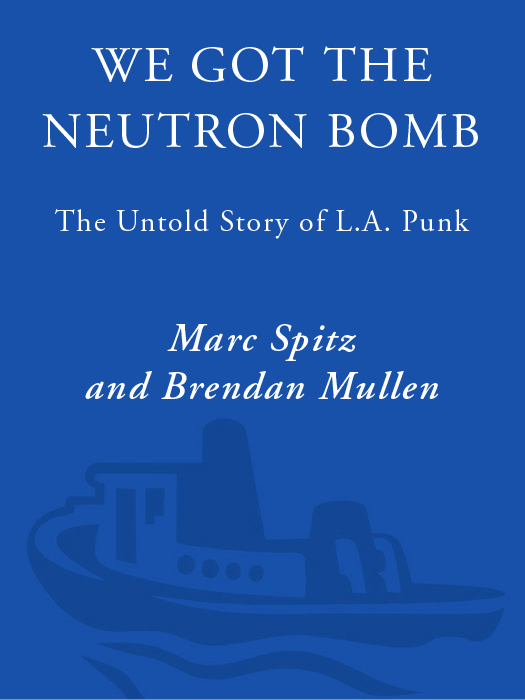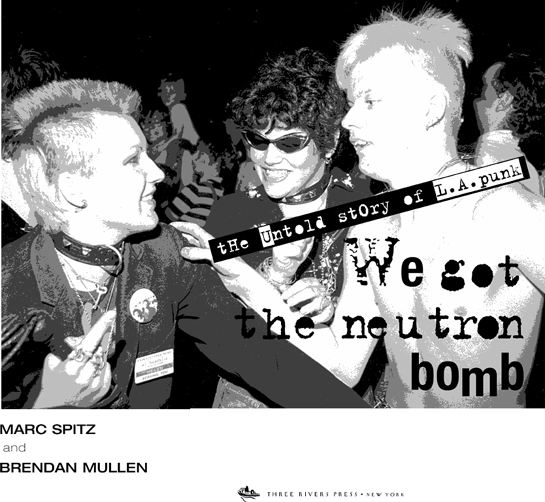contents
A case is made to declare Jim Morrison of Los Angeles, California, the godfather of punk.
Chapter 1
The glitter rock invasion provides L.A.s outcasts with an alternative to the singer-songwriters stranglehold. David Bowie is king. Rodneys English Disco is his court.
Chapter 2
The Stooges and New York Dolls burn out on smack and sickness, as Babylons glitter kids pretty faces go to hell.
Chapter 3
From the ashes of glitter and in anticipation of punk, a new hard rock (exemplified by Stooges bass player Ron Ashetons New Order) and a zine to celebrate it, Back Door Man, are born.
Chapter 4
The teenagers who missed out on glitter rocks heyday discover Iggy and the Stooges Raw Power and find each other at the Sugar Shack.
Chapter 5
The Runaways, hypemeister Kim Fowleys all-girl, American teenage Beatles, are formed. Dismissed by most, theyre warmly embraced by the kids in L.A.
Chapter 6
Rodney Bingenheimer takes a job on the radio at KROQ and begins broadcasting punk. The Motels spearhead a DIY movement, and Kim Fowleys new find, the Quick, is poised to become the next American teenage Beatles.
Chapter 7
As the Sex Pistols media blitz reaches southern California, the Germs, the Weirdos, and the Screamers get their own thing going.
Chapter 8
Slash magazine is launched and soon becomes the new scenes paper of record.
Chapter 9
The origins of L.A.s great, lost synth punk pioneers. Fronted by the spike-haired Tomata du Plenty and his foil, Tommy Gear, the Screamers blend high-camp theatrics with aggro keyboards. The world catches up twenty years later.
Chapter 10
Five spud-boys from Akron, Ohio, move to Los Angeles, capture some national attention, and make life hell for every funny-looking punk.
Chapter 11
A drummerless X, featuring two poets and a former rockabilly star, forms in an old Hancock Park mansion adjacent to the mayoral residence.
Chapter 12
A testimonial to Los Angeles punks original demonic prankster coprophile, the inimitable Black Randy: band leader, would-be street hustler, unapologetic worshiper of Idi Amin, and erstwhile office-supplies salesman.
Chapter 13
Kim Fowley gets his hooks into L.A. punk rock. The media catch on but miss the boat. Discounting the Dickies, the record industry remains indifferent.
Chapter 14
The Masque, an illegal basement club off Hollywood Boulevard, becomes L.A.s first all-punk venue/rehearsal space/crash pad. The Plunger sisters come out.
Chapter 15
As the Germs learn how to play their instruments, their leader, Bobby Pyn (formerly Paul Beahm), re-invents himself as Darby Crash, L.A.s most notorious punk.
Chapter 16
A serial killers rampage hits close to home.
Chapter 17
Up and down with the early, dirty Go-Gos.
Chapter 18
The Sex Pistols refuse to perform in Los Angeles. A punk convoy heads upstate to witness their very last show at San Franciscos Winterland Ballroom.
Chapter 19
Punk gets a bad rap as the Troubadour is trashed, and Fear injects cartoon violence and metal chops into the genre.
Chapter 20
Dirt cheap and walking distance from the Masque, the Canterbury, a ravaged apartment complex off Hollywood Boulevard, becomes a punk rock dormitory.
Chapter 21
Proto-hardcore acts like the Middle Class and psychobilly transplants the Cramps help L.A. punk mutate. The proprietors of Madame Wongs and the Hong Kong Caf provide venues outside Hollywood while simultaneously trying to destroy each other.
Chapter 22
British imports Levi and the Rockats lead a brief rockabilly invasion. Select punks embrace the requisite quiffs, tattoos, and sharkskin suits, then stop.
Chapter 23
The LAPD declares war on punk rock at the Elks Lodge riot on St. Patricks Day.
Chapter 24
Louder, faster, and angrier, Black Flag makes its mark. Straight outta Hermosa Beach.
Chapter 25
An influx of heroin takes the fun out of everything.
Chapter 26
Slash magazine morphs into Slash Records. The Germs record their first (and only) full-length album, the Joan Jettproduced classic GI.
Chapter 27
The Screamers disintegrate after pouring their energies into a misguided film project.
Chapter 28
Orange County hardcore gets ultraviolent. Skate punk is born.
Chapter 29
The Go-Gos travel to England and return a pop act. Founder Margot Olaverra is jettisoned.
Chapter 30
X records their classic debut album with producer and former Doors keyboard player Ray Manzarek.
Chapter 31
A booze-soaked roots rock revival hits the scene, fueled by the Blasters, Top Jimmy and the Rhythm Pigs, and Los Lobos.
Chapter 32
East L.A. goes punk. Los Lobos plays Hollywood.
Chapter 33
Jeffrey Lee Pierce forms the Gun Club, raises hell, and records another classic debut. The Zero Zero Club.
Chapter 34
Bad-rapped as suburban hardcore punks, Fullertons Big Three, the Adolescents, Agent Orange, and Social Distortion, have pop chops to burn.
Chapter 35
Penelope Spheeris invades punks space and documents the Hollywood scenes twilight.
Chapter 36
Darby Crash dies before he gets old.
Chapter 37
The Go-Gos hit the top. X sells out the Greek Theater without a record deal. Video kills the radio star.
Pat Smear joins Nirvana. L.A.s original punks bury their own.
acknowledgments
Marc Spitz would like to thank Jim Fitzgerald and everyone at Carol Mann, Carrie Thornton, Jim Walsh, Amelia Zalcman, and everyone at Three Rivers Press, Brendan Mullen, Lisa Corson, Matt Ellis, the world-famous Danny Athlete, Jim Carberry, Sid Spitz, Ricki and Al Josephberg, Alan Light, Tracey Pepper, Maureen Callahan, Sia Michel, Ron Richardson and everyone at Spin, Kari Bauce, Jackie Pants, Johnny Lisecki, James and Camille Habacker, Ultragrrrl, Jaan Uhelszki, Charles M. Young, the Weirdos (for the title), Johanna Went, Ron Shavers, The Library, Pleasant Gehman, Jenny Lens, Cat Tyc, Paige Lipman, Jennifer Schwartz, Amra Brooks, Emma Forrest, Lisa Derrick, Legs McNeil, Susan Clary, John Roecker, Phast Phreddie Patterson, Steven Darrow, Jennifer Black, Omid Yaminiand, Ben Edmonds, Greg Shaw, and everyone who offered encouragement and helped us keep our shit together when it was coming apart.
Brendan Mullen would like to thank Kateri Butler, Jim Carberry, Deborah Drooz, Marc Spitz, Lisa Corson, Doug Cavanaugh, Jim Walsh at Three Rivers Press (for patience and going the extra two miles), and all those who generously contributed their time and memory or allowed us to use source material and photographs. Also shouts to Ron Stringer, Kristine McKenna, John Payne, Adam Parfrey, Kerry Colonna, Dave Alvin, Alan Rudolph, Jerry Stahl, Johanna Went, Stuart Cornfeld, Don Snowden, Europa, and others from the Mullen, Gallagher, Earley, McKeown, and Rainford clans who encouraged me to write things down.





